Michael J. Behe's Blog, page 571
November 11, 2018
Atheist historian combats claim that the Church persecuted classical learning
 A historian draws our attention this post from late 2016, a reflection on the survival of classical learning during the Christian era, in response to “Skep,” an energetic atheist blogger:
A historian draws our attention this post from late 2016, a reflection on the survival of classical learning during the Christian era, in response to “Skep,” an energetic atheist blogger:
But the usual way that those who are forced to admit that there were, in fact, many medieval natural philosophers studying all kinds of proto-scientific ideas, and doing so in the tradition of the Greeks and Romans and their Islamic successors, deal with this awkward fact is to claim that these poor scholars were cowed by the terrible restrictions of the Church and tightly constrained in what they could explore. Which, right on cue, “Skep” proceeds to do:
“The fact is there weren’t a lot of scientists around for the church to oppress during the middle ages, and those who did study things like optics or astronomy in those days didn’t dare defy the teachings of the church. The burning, persecution, and oppression came later, when real science began to flourish and the dogmas of the church were challenged.”
Except the fact is that there were few such restrictions and the medieval scope for inquiry was actually extremely wide. The Condemnations of 1210-1277 that he refers to in his mangled reference to Roger Bacon above actually illustrate this point quite neatly. If, as “Skep” claims, the medieval Church stifled proto-scientific inquiry so completely we should have no trouble finding this reflected in clear statements by the Church delineating what was off limits for inquiry. After all, it’s not like the medieval Church was shy about making its position on what could or could not be believed or questioned clear. And it seems “Skep” thinks the Condemnations of 1210-1277 represent just such statements.
But do they? To begin with, if they do we would expect these statements to be made in some kind of proclamation that applied to the whole of Christendom: in, say, a canon of an ecumenical council or at least a Papal bull. But no such statements exist. The 1210-1277 Condemnations, on the contrary, are very specific and highly local in their application: they apply only to the Arts Faculty at the University of Paris and nowhere else… Tim O’Neill, ““The Dark Ages” – Popery, Periodisation and Pejoratives” at History for Atheists
It’s a good thing Dr. O’Neill is clarifying matters. But one suspects his main audience will be Christians and other theists who want to know our own history. The sort of atheist who blogs up a storm about how the Dark Ages Are Back!! won’t be interested in the specifics of the survival of classical learning in Christian Europe. Classical learning might not hold his interest for long anyway.
Follow UD News at Twitter!
See also: Naturalist atheists rewrite history, scholar admits, due to bias against religion ((re Tim O’Neill))
Copyright © 2018 Uncommon Descent . This Feed is for personal non-commercial use only. If you are not reading this material in your news aggregator, the site you are looking at is guilty of copyright infringement UNLESS EXPLICIT PERMISSION OTHERWISE HAS BEEN GIVEN. Please contact legal@uncommondescent.com so we can take legal action immediately.
Plugin by Taragana
Moshe Averick: When does a “gap” point beyond conventional science?
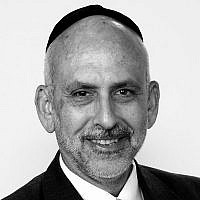 Rabbi Moshe Averick, author of The Confused World of Modern Atheism (Mosaica Press, 2016) addresses the “God of the Gaps” – the claim that the intersections between the material and the immaterial in nature are just “gaps” waiting to be filled in (with special reference to the origin of life):
Rabbi Moshe Averick, author of The Confused World of Modern Atheism (Mosaica Press, 2016) addresses the “God of the Gaps” – the claim that the intersections between the material and the immaterial in nature are just “gaps” waiting to be filled in (with special reference to the origin of life):
The first thing I would bring to your attention – although not the essential point – is that when we discuss the Origin of Life we are not talking about a “gap” in scientific knowledge. A gap implies some acceptable and tolerable missing piece of the puzzle that we expect to fill in within some reasonable amount of time. What we actually see is more like the ocean between the coast of California and Japan which cannot be described as a “gap” by any stretch of the imagination; there is simply endless open space with nothing in between…
As world renowned chemist James Tour has put it: “When will the scientific community confess to the world that they are clueless on life’s origin, that the emperor has no clothes?” Microbiologist Dr. Milton Wainright: “Are we getting any closer to an understanding of the origin of life? It is not merely that biology is scratching the surface of this enigma; the reality is that we have yet to see the surface!” Geneticist Dr. Michael Denton: “Between a living cell and the most highly ordered non-biological system such as a crystal or snowflake there is a chasm as vast and as absolute as it is possible to conceive.” Moshe Averick, “God of the Gaps: Is there No End to the Foolishness?” at The Times of Israel
With respect to any gap. It might be helpful to ask, what does the witness think would close the gap? Suppose we want to know how we got from the Underwood to the laptop. We can fill in the gap via a history of successive inventions. If we ask, how did human beings gain the ability to process abstractions and eventually write them down, we are addressing an entirely different problem. It is not a gap; it is a preceding void.
And if we think that looking into the eyes of a chimpanzee is a way of filling that void, we are kidding ourselves.
Follow UD News at Twitter!
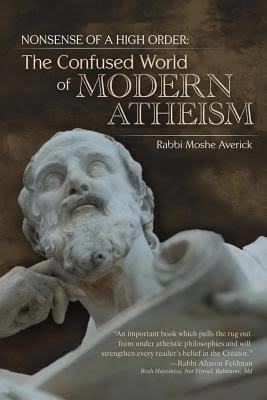 See also: Moshe Averick on origin of life as bringing out the illogic of naturalist atheists
See also: Moshe Averick on origin of life as bringing out the illogic of naturalist atheists
Moshe Averick in USA Today on the confusion around origin of life
and
Rabbi Moshe Averick challenges physicist Paul Davies on origin of life
Copyright © 2018 Uncommon Descent . This Feed is for personal non-commercial use only. If you are not reading this material in your news aggregator, the site you are looking at is guilty of copyright infringement UNLESS EXPLICIT PERMISSION OTHERWISE HAS BEEN GIVEN. Please contact legal@uncommondescent.com so we can take legal action immediately.
Plugin by Taragana
November 10, 2018
Historian: Human evolution theorists were attempting to be moral teachers

Neanderthal/Photaro
Post World War II, scientists studying origins, sensed a moral mission to tell the story in order to encourage us to be better people. The close-knit hunter-gatherer clans that represented all humanity co-operated for survival and were chock full of moral lessons for us all. But was it true?:
Readers and reviewers lumped Morris, Ardrey and Lorenz together as promoting a powerful new vision of humans as animals. (To be fair, each author saw different moral systems and imperatives emerging from their research, but these nuances mattered less to readers than their shared zoomorphic vision.) The view of humans as specialised animals carried implications for who among the scientists could truly judge what it meant to be human. If our ecological past determined human nature, then reconstructing the biological processes that had created humanity required a retrospective view. No longer defined by the rise of agriculture or true language, the conditions that gave rise to human nature now included our ability to avoid predators, to hunt, to kill and to survive on the dangerous open plains of the savannah. Lorenz, Ardrey and Morris shared the underlying view that aggression, violence and murder helped to shape human nature. Their work thus posed a pressing existential question: how had humans ever managed to cooperate? The answer, it seemed, would be found by scientists with expertise in animal behaviour. Erika Lorraine Milam, “The hunt for human nature” at Aeon
Of course, that makes the researcher the human and the research topic not humans but animals. How does that work for equality? Author Milan thinks it’s a wash:
The political malleability of moral lessons from humanity’s deep history demonstrates that biological essentialism need not be reductionist or dehumanising, nor is there any consistent analogy between biology and ideology. Although biological theories of human nature have been used to debase some members of society as less valuable than others, they have also been used to promote egalitarian conceptions of humanity as a whole. Erika Lorraine Milam, “The hunt for human nature” at Aeon
Yes, their theories have sometimes been used to promote equality but on what grounds? That we are “evolved animals” who need coercion? The key question about equality is always “equality with what?”
This long, thoughtful essay surveys many trends in writing about early humans over the last century. The only sure thing is, those early humans can’t be brought back and interviewed.
Follow UD News at Twitter!
See also: World’s oldest known painting, 40,000 years old, found in Borneo jungle
Pleistocene human remains show many deformities
and
No one evolved faster than the Neanderthal
Copyright © 2018 Uncommon Descent . This Feed is for personal non-commercial use only. If you are not reading this material in your news aggregator, the site you are looking at is guilty of copyright infringement UNLESS EXPLICIT PERMISSION OTHERWISE HAS BEEN GIVEN. Please contact legal@uncommondescent.com so we can take legal action immediately.
Plugin by Taragana
Do we really live longer because of “longevity genes”? Researchers cast doubt
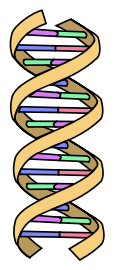 It’s now suggested that people likely to live long tend to find each other (assortative mating). How else to explain this?Researchers found that siblings’ and first cousins’ lifespans were well correlated but also:
It’s now suggested that people likely to live long tend to find each other (assortative mating). How else to explain this?Researchers found that siblings’ and first cousins’ lifespans were well correlated but also:
But spouses’ lifespans were correlated, too. That could be easily explained by spouses sharing the same household and lifestyle: eating the same healthy diet or puffing on cigarettes together. But the researchers noticed something odd: the lifespans of other relatives related only by marriage also correlated. That can’t be explained by genes, and it can’t be explained by shared environment.
So Ruby and his colleagues started investigating the lifespans of in-laws. They looked at siblings-in-law, and first-cousins-in-law, and then further afield, at relationships like “the sibling of a sibling’s spouse” (your brother’s wife’s sister) and “the spouse of a spouse’s sibling” (your husband’s sister’s husband). Even at these distant relationships, lifespans were correlated—if your spouse’s sibling’s spouse lived to a ripe old age, that means you’re a bit more likely to do the same.Cathleen O’Grady, “Genetics play less of a role in lifespan than we thought” at Ars Technica
They came up with a figure of 7% heritability (which includes both genetic and nongenetic inheritances) based on Ancestry.com, which may not be generalized to the whole human population.
But how and why do people find each other? That would be the next question to study. If the recent finding that religiously affiliated people live “9.45 and 5.64 years longer” holds up, that may provide part of the explanation for how they find each other: The others are already there.
One also wonders whether a tendency in a sibling-inlaw group, such as described by the researchers, to care for aged people also makes a difference.
Anecdotally, many aged people die because they have a fall, a heart attack, or a stroke when they are all alone and are found dead days later. They could have been saved and lived another five years if anyone had found them immediately and administered aid or summoned help. That, of course, won’t happen as much among aged people who live in close communities. If so, we might expect ages at death to be higher.
Follow UD News at Twitter!
See also: Researcher: Ancient people were NOT all dead by 30 years of age
Aging has always been with us, say researchers (to no one’s surprise)
Anomaly: Human mortality hits a plateau after 105 years of age
Is aging a disease or does it serve an evolutionary purpose?
and
Study: Religiously affiliated people lived “9.45 and 5.64 years longer…”
Copyright © 2018 Uncommon Descent . This Feed is for personal non-commercial use only. If you are not reading this material in your news aggregator, the site you are looking at is guilty of copyright infringement UNLESS EXPLICIT PERMISSION OTHERWISE HAS BEEN GIVEN. Please contact legal@uncommondescent.com so we can take legal action immediately.
Plugin by Taragana
Stress: Scientist to be sentenced for trying to poison labmate
 We run this story as a public service. Sometimes the pressure might get to you but it is almost never entirely that person’s fault and this is not the way to go about dealing with it:
We run this story as a public service. Sometimes the pressure might get to you but it is almost never entirely that person’s fault and this is not the way to go about dealing with it:
Graduate student Zijie Wang has pleaded guilty to poisoning a co-worker in the chemistry labs at Queen’s University in Kingston, Canada. He had been dosing his co-worker’s food with N-nitrosodimethylamine (NDMA), used to induce cancer in rats, which initially made the victim vomit and gave him diarrhoea.
The victim – who survived and testified in court on 2 November – subsequently installed a camera on his desk, and recorded Wang pipetting a substance into his food. Wang is due to be sentenced on 11 December for ‘administering a noxious thing to endanger life or cause bodily harm’ and aggravated assault.Andy Extance, “Chemistry graduate student admits poisoning colleague with carcinogen” at Chemistry World/em>
The poison was NDMA, used to induce lib\ver cancer in test animals. It has been used in poisoning cases before, in one case a fatal one. The victim, who has not been named, fears developing liver cancer and his contract was not renewed due to “inadequate funding”:
Because the department renewed the contracts of other researchers who had less experience than him, the victim said Wang’s actions embarrassed Queen’s chemistry department and his absence would help the school “heal.”
“It was a reasonable excuse to get me out,” he said. Raechel Huizinga, Iain Sherriff-Scott, “Victim testifies in poisoning case, sentencing marked for December” at Queens University Journal
The victim says he hasn’t told his family but in a small town like Kingston, Ontario (home of Queens University), it’s hard to imagine they wouldn’t know.
Back to regular coverage shortly.
Follow UD News at Twitter!
See also: Meditation and yoga can reverse DNA reaction that causes stress – researcher (This may turn out not to be true but, for heavens’s sakes, try it first. – News)
Copyright © 2018 Uncommon Descent . This Feed is for personal non-commercial use only. If you are not reading this material in your news aggregator, the site you are looking at is guilty of copyright infringement UNLESS EXPLICIT PERMISSION OTHERWISE HAS BEEN GIVEN. Please contact legal@uncommondescent.com so we can take legal action immediately.
Plugin by Taragana
Cats played a unique role in the space program

Greg Hume (CC BY-SA 3.0)
Back in the 1960s, space scientists needed to know if it is true that a cat always lands on its feet:
NASA contributed funding to the paper “A Dynamical Explanation of the Falling Cat Phenomenon,” published in the International Journal of Solids and Structures, by Stanford’s T.R. Kane and M.P. Scher.
What was so significant about the paper was that it demonstrated that cats are physically capable of rotating their body in mid-air to right themselves when falling. A cat employs specific motor functions in order to achieve this self-righting mechanism, and the paper analyzed these functions as equations that could then be applied to humans.
While this function isn’t very useful to humans on earth, it’s critically important in space, as astronauts seeks to right their bodies traveling through zero gravity. Wolfgang Wild, “How flying cats got us to the moon. Really.” at Considerable
Apparently, this story is true, despite the fact that three cats are sitting here making me (O’Leary for News) write it:
Kane and Scher neither lifted nor dropped a single cat. Instead, they created a mathematical abstraction of a cat: two imaginary cylinder-like chunks, joined at a single point so the parts could (as with a feline spine) bend, but not twist. When they used a computer to plot the theoretical bendings of this theoretical falling chunky-cat, the motions resembled what they saw in old photographs of an actual falling cat. They conclude that their theory “explains the phenomenon under consideration”.
In 1993, a professor at the University of California, Santa Cruz, applied some heavier-duty mathematics and physics tools to the same question. Richard Montgomery’s study, called Gauge Theory of the Falling Cat, leaps and bends across 26 pages of a mathematics journal. Then it mutters that “the original solutions of Kane and Scher [are] both the optimal and the simplest solutions”. Marc Abrahams, “Cat physics – and we are not making this up” at The Guardian
Here’s the paper.
Hat tip: Blazing Cat Fur
Follow UD News at Twitter!
10 November 2018
I (O’Leary for News 
November 9, 2018
Software pioneer: The nature of intelligence forbids general artificial intelligence
 This post went viral yesterday at Mind Matters:
This post went viral yesterday at Mind Matters:
The 2014 science fiction film Transcendence featured a scientist who uploaded his consciousness into an AI program. Many people talk as though things like that are just around the corner. But industry pros say it isn’t really possible. Why not?
François Chollet, author of Keras, a framework for the Python deep learning language, offers a list of reasons, but starts by pointing to an underlying misconception: that a super-AI could be developed that would go on creating more super-AIs until something vastly more intelligent than a human being arises. He points out that such a process has not actually happened in the universe of which we have knowledge:
An overwhelming amount of evidence points to this simple fact: a single human brain, on its own, is not capable of designing a greater intelligence than itself. This is a purely empirical statement: out of billions of human brains that have come and gone, none has done so. Clearly, the intelligence of a single human, over a single lifetime, cannot design intelligence, or else, over billions of trials, it would have already occurred. François Chollet, “The Impossibility of Intelligence Explosion” at Medium
If we cannot design an intelligence, why do we think we can design a machine that can design an intelligence? ”
More. Software pioneer says general superhuman artificial intelligence is very unlikely” at Mind Matters
Is the idea surprising or what?
Follow UD News at Twitter!
See also: See also: Should robots run for office? A tech analyst sees a threat to democracy if they don’t
Too late to prevent rule by The Algorithm? Dilbert’s creator, Scott Adams, tells Ben Shapiro why he thinks politicians soon won’t matter.
How AI could run the world Its killer apps, in physicist Max Tegmark’s tale, include a tsunami of “message” films
Human intelligence as a halting oracle (Eric Holloway)
Meaningful information vs. artificial intelligence (Eric Holloway)
Copyright © 2018 Uncommon Descent . This Feed is for personal non-commercial use only. If you are not reading this material in your news aggregator, the site you are looking at is guilty of copyright infringement UNLESS EXPLICIT PERMISSION OTHERWISE HAS BEEN GIVEN. Please contact legal@uncommondescent.com so we can take legal action immediately.
Plugin by Taragana
Suzan Mazur asks: How far have we gotten in understanding the mechanome?
The mechanome is the underresearched “ the set of proteins or molecular entities that sense or respond to forces” within the cell (Allen Liu). Our earlier stab at the subject here at UD garnered 354 comments, so there’s no shortage of interest. The mechanome (and mechanobiology in general) plays a key role in research into artificial cells.
Suzan Mazur is the author of The Paradigm Shifters: Overthrowing ‘the Hegemony of the Culture of Darwin’. 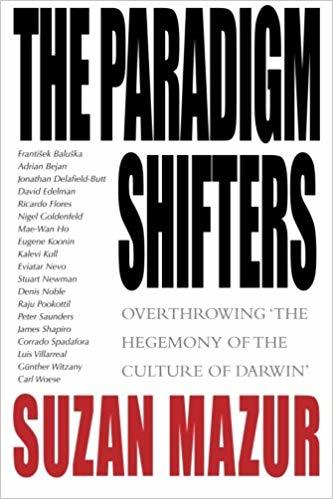 Suzan Mazur talks to mechanical and biomedical engineer Allen Liu, one of the people best placed to offer some insights:
Suzan Mazur talks to mechanical and biomedical engineer Allen Liu, one of the people best placed to offer some insights:
Suzan Mazur: The Liu Lab at the University of Michigan is particularly interested in the mechanobiology of the cell lipid membrane. Would you briefly describe your hypothesis about cell tension and membrane trafficking and the significance of this in building an artificial cell?
Allen Liu: The hypothesis is currently more relevant to living cells. At the moment it would be a bit difficult to extrapolate that for synthetic or artificial cells.
We are building mechanosensitive cells—artificial cells that will basically respond to mechanical forces. In this case, we are mimicking the basic process that cells can sense and respond to forces. This is work we’ve done on our own as well as in collaboration with Vincent Noireaux at the University of Minnesota.
Basically, we are incorporating channel proteins that are known to respond to membrane tension in the bilayer. If we incorporate this successfully, the artificial cell senses elevated membrane tension and will open. A pore, like a little door, enables molecules to go in and out. We’re writing this paper up now. More.
Suzan Mazur, “On the Frontline: Allen Liu—the Mechanome and Synthetic Cell Development” at Oscillations
We’ll keep watching the file.
Follow UD News at Twitter!
See also: Rethinking biology: What role does physical structure play in the development of cells?
Copyright © 2018 Uncommon Descent . This Feed is for personal non-commercial use only. If you are not reading this material in your news aggregator, the site you are looking at is guilty of copyright infringement UNLESS EXPLICIT PERMISSION OTHERWISE HAS BEEN GIVEN. Please contact legal@uncommondescent.com so we can take legal action immediately.
Plugin by Taragana
Can culture explain why brains have become bigger?
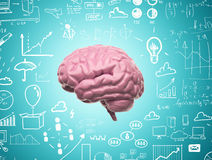 From ScienceDaily:
From ScienceDaily:
Humans have extraordinarily large brains, which have tripled in size in the last few million years. Other animals also experienced a significant, though smaller, increase in brain size. These increases are puzzling, because brain tissue is energetically expensive: that is, a smaller brain is easier to maintain in terms of calories. Building on existing research on learning, Muthukrishna and colleagues analytically and computationally modeled the predictions of the cultural brain hypothesis and found that this theory not only explains these increases in brain size, but a variety of other relationships with group size, learning strategies, knowledge and life history.
The theory relies on the idea that brains expand to store and manage more information. Brains expand in response to the availability of information and calories. Information availability is affected by learning strategies, group size, mating structure, and the length of the juvenile period, which co-evolve with brain size. The model captures this co-evolution under different conditions and also describes the specific and narrow conditions that can lead to a take-off in brain size — a possible pathway that led to the extraordinary expansion in our own species. The authors called this set of predictions the cumulative cultural brain hypothesis. These theories were supported by tests using existing empirical data. Taken together, the findings may help explain the rapid expansion of human brains and other aspects of our species’ life history and psychology.
“This is a brand-new theory to explain the evolution of the human brain as well as brains more generally. It shows how various characteristics of a species are actually intrinsically connected through a common evolutionary process,” says Muthukrishna. “The limits to larger brains is our ability to birth them, but as this theory suggests, this process is ongoing — we’re now expanding our juvenile period, hitting a new biological limit in our ability to reproduce at an older age.” Paper. (open access) – Muthukrishna M, Doebeli M, Chudek M, Henrich J. The Cultural Brain Hypothesis: How culture drives brain expansion, sociality, and life history. PLoS Comput Biol, 2018 DOI: 10.1371/journal/pcbi.1006504 More.
Humans have certainly expanded the amount of information available to us explosively in the last few decades, and significantly in the last few thousand years. But it’s unclear that the amount of information a chimpanzee or a crow living in the wild needs has changed much at all. Thu7s, the theory might be easier to consider if we left non-humans out of the account for now.
To the extent that this is a theory intended to account for the evolution of the human brain, it has a lot of competition:
Some say we evolved large brains alongside small guts, but another research team found no such correlation. Alternatively, fluid societies (relative to chimps) explains it. And, according to some, mental illness helped. Chimpanzees’ improved skills throwing excrement are also said to provide hints about human brain development. (The ability to throw projectiles at very high speeds is apparently unique to humans.) Our ancestors had to grow bigger brains anyway, we are told, to make axes and hunt something besides elephants. Collective intelligence (“ideas having sex”), whatever that means, has been really important to human evolution as well.
The obvious problems with all of these disunited and discordant theses can be summed up for convenience as: 1) If some aspect of chimpanzee behavior explains matters, why didn’t it produce the same result in chimpanzees? 2) If mere advantage (which every primate seeks) explains a development like the human mind, why did only humans experience it?
The above is only a selection from the claims advanced for one isolated hook or another on which key parts of our fragile humanity are said to suspend. A vast, interlocking pattern of timed hooks forming a design would better account for the evidence, but it wouldn’t be Darwin. Darwinian theory, by its very nature, demands this zealous emphasis on isolated, randomly generated characteristics or events — warring trivia, basically. And we haven’t even got to language or society yet. More.
Just about anything that a theorist thinks is righteous or plausible or defensible can be said in polite company to promote the evolution of the human brain. So the answer to the title question (“Can culture explain why brains have become bigger?”) is: Yes. Your ticket is #17.
Follow UD News at Twitter!
See also: Do big brains matter to human intelligence?
Software pioneer says general superhuman artificial intelligence is very unlikely. The concept, he argues, shows a lack of understanding of the nature of intelligence. François Chollet, author of Keras, for the Python deep learning language, cites the No Free Lunch theorem as one of the reasons.
and
Researchers find loneliness is hard on the brain What we think about our lives really does affect our health. What’s less often recognized is that loneliness could cause be a cause of brain damage as well, at least if we go by rodent studies.
Copyright © 2018 Uncommon Descent . This Feed is for personal non-commercial use only. If you are not reading this material in your news aggregator, the site you are looking at is guilty of copyright infringement UNLESS EXPLICIT PERMISSION OTHERWISE HAS BEEN GIVEN. Please contact legal@uncommondescent.com so we can take legal action immediately.
Plugin by Taragana
Theorists debate: How “neutral” is evolution, really?
Neutral evolution, intended to cover for the failures of Darwinian evolution (natural selection), is now being challenged by selectionists:
Selection isn’t in doubt, but many scientists have argued that most evolutionary changes appear at the level of the genome and are essentially random and neutral. Adaptive changes groomed by natural selection might indeed sculpt a fin into a primitive foot, they said, but those changes make only a small contribution to the evolutionary process, in which the composition of DNA varies most often without any real consequences.
But now some scientists are pushing back against this idea, known as neutral theory, saying that genomes show much more evidence of evolved adaptation than the theory would dictate. This debate is important because it affects our understanding of the mechanisms that generate biodiversity, our inferences about how the sizes of natural populations have changed over time and our ability to reconstruct the evolutionary history of species (including our own). What lies in the future might be a new era that draws from the best of neutral theory while also recognizing the real, empirically supported influence of selection.Viviane Callier, “Theorists Debate How ‘Neutral’ Evolution Really Is” at Quanta
Isn’t the real story more like this: Neutral drift will do some things for you. Natural selection (adaptation) will do some other things. But everyone realizes that none of it produces the staggeringly complex specified systems of life. And pretending that these systems are not staggeringly complex (“the brain is just a meat computer”) doesn’t work either.
So they are left with pieces of academic piffle orbiting granting bodies, ruffled by the occasional disappearance of people who inconveniently lay out the facts.
And so they circle round and round.
Follow UD News at Twitter!
See also: New findings challenge the “neutral” theory of evolution for 95% of human genome
Heads up! Neutral theory of evolution
and
Commenter nails the problem with neutral theory of evolution
Copyright © 2018 Uncommon Descent . This Feed is for personal non-commercial use only. If you are not reading this material in your news aggregator, the site you are looking at is guilty of copyright infringement UNLESS EXPLICIT PERMISSION OTHERWISE HAS BEEN GIVEN. Please contact legal@uncommondescent.com so we can take legal action immediately.
Plugin by Taragana
Michael J. Behe's Blog
- Michael J. Behe's profile
- 219 followers



